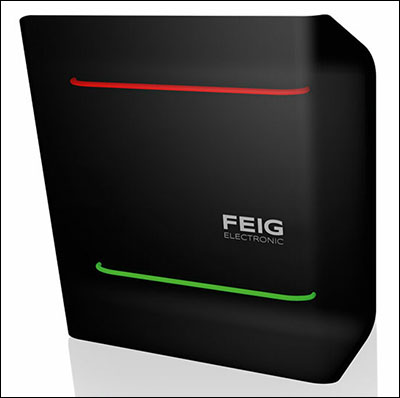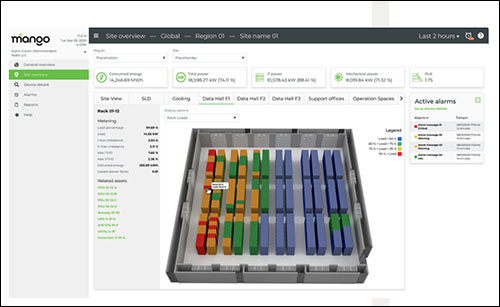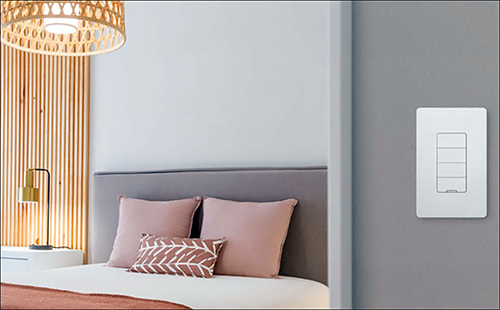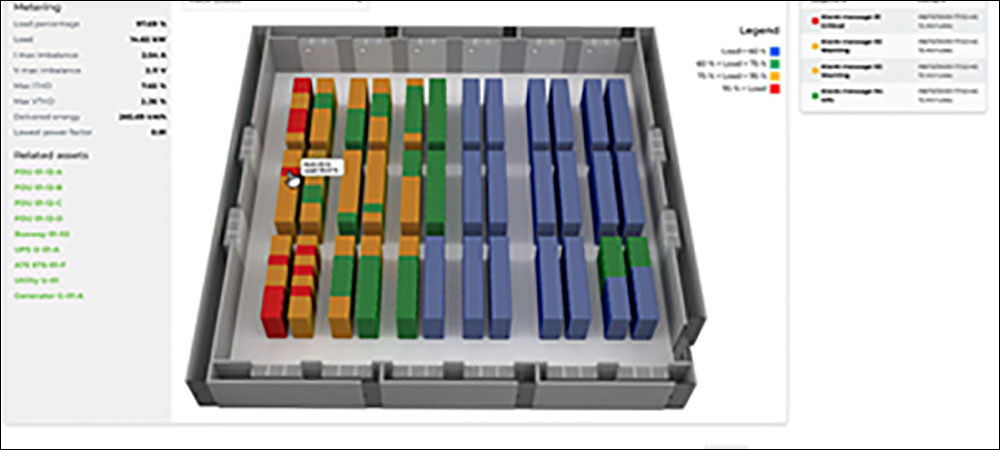Feig Electronic Launches RFID Access-Control Software
Feig Electronic has launched its myAXXESS RFID access-control solution for buildings and parking areas. The solution is free with Feig reader hardware, the company reports, and is designed so that systems integrators can offer it as an incentive to customers that require a new access-control system or are looking to modernize an outdated one. The solution can be a standalone system or it can be integrated into an existing RFID control point, according to Feig Electronic.
With the myAXXESS solution, systems integrators can enable users to manage access at no additional cost, for applications involving open electronic gates and barriers. Users can access short-range applications via chip cards or key fobs, presenting their credentials a few inches from a reader. Transponders for long-range identification can be located on a vehicle’s windshield or rearview mirror headlight.
 Authorized users can pass through a gate quickly, the company reports, without having to wait for a reader to grant access. Tags are non-proprietary, so customers can purchase inexpensive tags and brand them for their business. If an integrator has a small or medium-sized project, Feig reports, an access-control installation needs to be simple and resource-efficient, and myAXXESS is intended to be integrated quickly and scalable. The readers and transponders can be operated intuitively, the company notes, reducing the amount of support time integrators need to dedicate to customers.
Authorized users can pass through a gate quickly, the company reports, without having to wait for a reader to grant access. Tags are non-proprietary, so customers can purchase inexpensive tags and brand them for their business. If an integrator has a small or medium-sized project, Feig reports, an access-control installation needs to be simple and resource-efficient, and myAXXESS is intended to be integrated quickly and scalable. The readers and transponders can be operated intuitively, the company notes, reducing the amount of support time integrators need to dedicate to customers.
For sensitive environments, Feig offers chip card technologies such as Mifare DESFire and UCODE DNA, from NXP Semiconductors. PoE and offline management are available, enabling data collection even if power goes down. A customer’s access-control system can be centrally controlled using Feig’s myAXXESS Manager software to manage authorizations, readers and transponders. Customers can add, update or create user groups, and the system includes solutions for public holidays, as well as for special rules and events, which can be stored along with individual authorizations.
“With myAXXESS, Feig offers systems integrators a perfectly coordinated overall package, including RFID readers, transponders and software,” said Manuel Haertlé, the firm’s senior product manager, in a prepared statement. “Now integrators can offer their customers smooth and highly reliable access to their properties. To meet Feig’s high performance and quality standards, the entire conception, programming and production of Feig systems takes place exclusively in Germany.”
Radix IoT Releases Internet of Things Platform for OEMs
Radix IoT has announced the public release of its Mango Series 4 platform, designed to offer greater usability, scalability and security features than its previous release. Mango Series 4 offers high capacity and analytical proficiency for OEMs and their customers’ asset management and remote monitoring of commissioned equipment. This, according to the company, creates an Internet of Things (IoT)-compatible infrastructure at a global scale.
Mango Series 4 provides tools for creating an inclusive IoT solution, according to the company. The system allows products to be network-enabled into a global ecosystem at the device level, and lets users build customer- or company-facing solutions in the cloud. “The vision for Mango Series 4 started prior to the merger of Infinite Automation Systems and Radix IoT almost a year ago,” said Joel Haggar, Radix IoT’s chief strategy officer, in a prepared statement. “The combined forces allowed for rapid innovation and development that enabled Mango to reach a larger application base, while also accelerating the speed to market of new features. We’re excited to be releasing Mango Series 4 to our general user-base.”
 The Radix IoT platform enables seamless connectivity for technologies of all types, shapes and sizes, the company reports, ranging from HVAC components to solar equipment, agriculture products, factory and industrial automation equipment, water-management systems and smart building enablement devices. Enterprises can streamline IoT deployment without having onsite or specialized staff members build out a cloud ecosystem. Bi-directional communications between the cloud and Mango Series 4 unify telemetry data from disjointed systems and equipment to drive analytics, artificial intelligence or machine-learning engines, Radix IoT explains, while allowing for remote diagnostics and control.
The Radix IoT platform enables seamless connectivity for technologies of all types, shapes and sizes, the company reports, ranging from HVAC components to solar equipment, agriculture products, factory and industrial automation equipment, water-management systems and smart building enablement devices. Enterprises can streamline IoT deployment without having onsite or specialized staff members build out a cloud ecosystem. Bi-directional communications between the cloud and Mango Series 4 unify telemetry data from disjointed systems and equipment to drive analytics, artificial intelligence or machine-learning engines, Radix IoT explains, while allowing for remote diagnostics and control.
The platform allows OEMs to private-label their customer-facing solution. Back-end scaling supports tens of thousands of locations, with distributed architecture allowing for management at scale. Options are available for using Radix IoT’s cloud for data storage, or end users’ infrastructure and cloud services. A redesigned administration section offers a Web-based application, with a redesigned workflow to manage systems of any size.
Security enhancements allow enterprises to adhere to a range of corporate IT standards and demands, with LDAP and SSO integration. OEM-focused integration allows integration with a range of operating systems and processors, enabling OEM package deployment without a massive rework of products. An analytics-driven API allows for easier integration with third-party analytics, AI or customer applications, the firm notes.
Senet Expands LoRaWAN Network Across Tampa Bay Metro Region
Senet, a provider of cloud-based software and services platforms designed to provide global connectivity and on-demand network build-outs for the IoT, has announced that it is expanding its public network operating on the LoRaWAN standard across Florida’s Tampa Bay metropolitan region.
With dense carrier-grade coverage already in place to support advanced metering infrastructure for water utilities, Senet is expanding its network to cover more than 1,600 square miles throughout Hillsborough and Pinellas Counties, including the cities of Tampa Bay and St. Petersburg. According to Senet, this network will be the largest and densest metropolitan deployment of public carrier-grade LoRaWAN connectivity in North America, providing the capacity to support millions of IoT device connections from more than 80 planned tower sites.
Due to gateway density and signal strength, the network will provide both broad outdoor coverage and indoor penetration, making the LoRaWAN network suitable for energy and utility, smart-city, manufacturing and distribution, asset-tracking and multi-location campus enterprise solutions. Water and gas utility companies, for example, can implement additional infrastructure monitoring and safety applications, such as leak detection, valve control and asset tracking. Meanwhile, municipalities and businesses can add sensors connected to Senet’s network to drive productivity and offer new services.
“As IoT technologies are increasingly influencing how we design, develop, build and operate the world’s physical infrastructure, our vision is to design networks that create a focal point of innovation for high-growth regions like Tampa Bay metro area,” said Bruce Chatterley, Senet’s CEO, in a prepared statement. “The combination of customer readiness, economic growth and a vibrant entrepreneurial ecosystem make this a great location to advance our infrastructure investments to help drive and support ongoing municipal and business efficiencies, resource conservation and overall economic vitality.”
The LoRaWAN network is being expanded on a rolling construction schedule and is expected to be completed by the end of this year. The network already has densely deployed areas and is available immediately for use in both pilots and commercial applications. Senet is collaborating with regional organizations, partners and end customers to develop solution interest and understand unique application and coverage requirements.
Snorm Intros BLE Beacons for Asset Tracking, Theft Prevention
Snom, which provides IP telephony for business and industry, has introduced beacons for its DECT products, including live location, asset tracking and theft prevention. The M9B beacon gateways are compact receivers that can register devices at close-range (1 meter to 15 meters) via Bluetooth or tags (such as Snom’s M9T tag) and report their location.
Four integrated antennas enable precise live tracking of the tags, then transmit this information in real time to the closest M900 base station via an encrypted DECT data connection. The data can be used to trigger an alarm or show where a tag is located via a smartphone’s display, and the beacons can be integrated into an existing telecommunications infrastructure.
The technology can be used in hospitals or care homes, where there is a need for safe and functional solutions to quickly locate mobile equipment, patients or nursing personnel. The same location tracking can be applied to frequently used moving vehicles, the company reports, such as forklift trucks in logistics or on building sites, as well as for easy-to-steal stock in office blocks, museums, hotels or shops.
The beacons feature Bluetooth Low Energy (BLE) functionality to make them more energy-efficient, Snom reports. Solar panels could power mobile beacon use, for example. Due to their low radiation power, the beacons do not influence other infrastructures, such as WLAN, DECT, mobile communications or medical devices.
“Telephony and collaboration aren’t the only tasks that make up a telecommunications infrastructure,” said Lee Underwood, Snom’s channel manager for the United Kingdom and Ireland, in a prepared statement. “There are many other functions that can be incorporated into an infrastructure, such as tracking and alarms. Our customers always turn to Snom devices for their robustness and diversity. And with the development of our beacon technology, we’re sending a clear signal that there are many other scenarios in which businesses can benefit from using our devices.”
Vitro Technology to Secure U.S. Nuclear Arsenal via IoT
Vitro Technology has announced that it has won a Direct to Phase II SBIR contract with the U.S. Air Force to defend the critical infrastructure of the United States’ nuclear arsenal. The IoT startup is based in Austin, Texas. Since 2016, the firm has been building what it calls a “spoof-proof” hardware and services model to provide zero-trust IoT data.
Vitro has worked with the World Bank, the Asia Development Bank and the Department of Homeland Security to deliver authenticated IoT data from remote sites worldwide. The project is expected to reduce travel by service teams by at least 50 percent, with trusted, detailed infrastructure data allowing airmen to focus on preventative maintenance and increased mission readiness.
In December 2020, the IoT Cybersecurity Act became law. Since the adoption of IoT technology became more widespread, the company reports, cybersecurity hacks have become a common occurrence. Despite the political turmoil of 2020, Congress recognized the fact that cybersecurity, specifically the security of the Internet of Things, poses a clear and present danger to national security and infrastructure. The IoT Cybersecurity Act, according to Vitro Technology, is intended to address this problem directly.
“Square insulates merchants of all sizes from the technical and legal complexities of processing credit cards,” said David Goodman, Vitro’s founder and CEO, in a prepared statement. “In the same way, Vitro insulates military and commercial customers from the complexities of protecting IoT devices and proving that their data is authentic. Vitro puts a compliant, crypto-secure IoT platform in a box. We help our customers focus on artificial intelligence and machine learning that will make their operations more efficient and sustainable, ensuring that the real-world IoT data feeding these models is secure and trusted.”
Nokia, Smartlabs Unveil IoT-Powered Smart Lighting
Smartlabs, a smart lighting and electrical control company, has announced the launch of Nokia Smart Lighting, a suite of IoT-powered products. The offerings are designed to make smart lighting easier to purchase, install and use, the company reports.
“One of our focus areas in brand licensing is smart home connected devices, and we are excited to bring the first Nokia Smart Lighting products to market with Smartlabs, a technology leader in smart lighting control,” said Vipul Mehrotra, the VP of Nokia Brand Partnerships, in a prepared statement. “This complete line of innovative, versatile and easy-to-use smart lighting devices reflects Nokia’s commitment to using technology to positively impact people’s everyday experience, including enabling effective energy management.”
 Nokia Smart Lighting products are designed to resemble wall switch and dial designs so family members and guests will not need to learn how to use them. Soft-touch haptics provide an elegant feel and quiet operation, the company reports, while designer touches are available, such as screwless wall plates and matte finishes, to enhance the aesthetic of a room, home or building.
Nokia Smart Lighting products are designed to resemble wall switch and dial designs so family members and guests will not need to learn how to use them. Soft-touch haptics provide an elegant feel and quiet operation, the company reports, while designer touches are available, such as screwless wall plates and matte finishes, to enhance the aesthetic of a room, home or building.
“We understand that every home is different, so we’ve created the new Nokia Smart Lighting products to complement any style of home and make smart lighting easy for everyone to enjoy,” said Rob Lilleness, Smartlabs’ chairman and chief executive officer, in the prepared statement. “The line is designed to work with any fixture, any bulb, and wiring configuration and you can control the system by touch, voice, phone or tablet. These new products enhance one’s home with beautiful lighting whether creating a mood for a dinner party or automatically turning on the staircase lights for the morning—its lighting that improves life.”
Nokia Smart Lighting switches and outlets can work with and from any type of lighting fixture and bulb, with any wiring configuration, and at any location. It can be deployed as a standard switch or with Google Assistant or Amazon Alexa. The product line, including paddle and dial switches, as well as a four-button, multi-function keypad, an outlet and a bridge, provides flexibility for upgrading a home, regardless of existing fixtures, wiring, bulb types or floorplan, the company reports. The devices will continue to work if someone turns off a switch, staying connected by utilizing a dual-mesh network: radio frequency and powerline.


